Worry Free Flexible Cancellation 14 Days Before Arrival!!


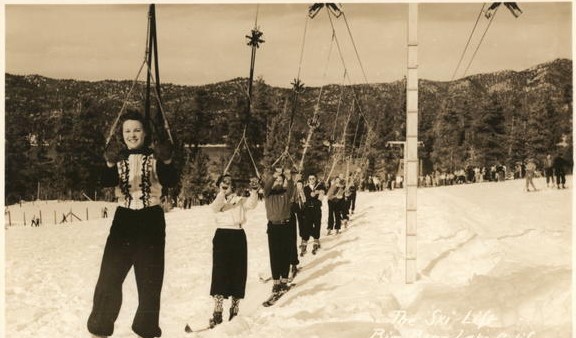
Today, Big Bear Lake, California is a vacation destination packed with modern marvels to check out in combination with stunning natural features that offer options for recreation and outdoor fun in abundance. However, travelers who head this way will also find that Big Bear Lake is a destination filled with rich history that’s worth digging into and exploring. While the establishment of the city itself dates back to the mid-19th century, the discovery of area gold also played a role in the area’s development over time. Today, some of the most impressive and iconic stops visitors make in Big Bear can be linked back to surprisingly simple irrigation solutions. Winter travelers can thank competitions established in the early 1920s for access to incredible slopes and ski options today. Read on to learn more about the intriguing history that makes a visit to Big Bear Lake so fascinating!
Not a lot of people know this, but the discovery of the Big Bear Valley was the result of one of Southern California’s few “cowboy and Indian” skirmishes. In 1845, Benjamin Wilson led a group of men in pursuit of a band of local Indians who had stolen horses from ranchers in Riverside and driven them to the high desert near Lucerne Valley. Wilson was a Southern California landowner who coincidentally was destined to become the grandfather of one of the most famous men in America, General George S. Patton. While in pursuit of the marauders, some of Wilson’s men were routed through the San Bernardino Mountains where they discovered a high mountain valley heavily populated with wildlife, and in particular, Grizzly Bear. Due to the abundance of bear Wilson called the area Bear Valley.
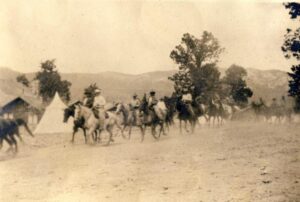
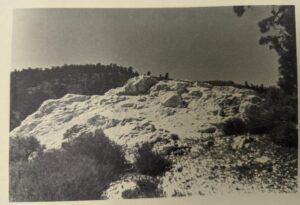
In 1855, gold was discovered in Big Bear by William F. Holcomb in a place called Starvation Flats, near the intersection of what is now Big Bear Boulevard and Division Drive. What followed was Southern California’s largest gold rush. Soon Holcomb Valley, a small mountain valley north of Big Bear, became the center of the gold rush activity and the most populated area in San Bernardino County at the time. Ironically, today Holcomb Valley is a mere shadow of its former self with virtually no full-time residents and only visitors consisting mainly of campers and off-road enthusiasts.
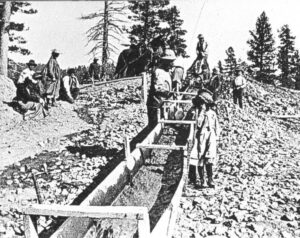
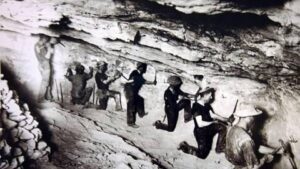
Some years later in 1884, an arch dam made of rock was constructed over the marshy meadow lands in the center of the Big Bear Valley, forming a man-made reservoir for irrigating citrus crops down below in Redlands. This original dam held back some 25,000-acre feet of water. In 1912, a larger dam was constructed, increasing the capacity of what would become known as Big Bear Lake to roughly 73,000-acre feet of water. In the early years water was released routinely from Big Bear Lake for irrigation purposes to the owners of the lake water who resided in the San Bernardino Valley. This caused lake levels to vary widely. In 1996, the Metropolitan Water District, the entity that manages Big Bear Lake, entered into an agreement to preserve the lake water by providing irrigation from another source to the owners of Big Bear Lake’s water. Since then, lake levels have remained much more stable.
During the intervening years, the Grizzly Bear, for which Big Bear received its name, was hunted to extinction. The last Grizzly was killed in 1906. By 1912 the valley had also been stripped of its gold with the iconic gold rush ending. Big Bear was home to the second bus line in the world, running from Big Bear Valley to San Bernardino to circumvent the two-day trip that was normally taken at that time via horse-drawn coach.
Winter sports have always been a natural adjunct to Big Bear. In 1928, a competition ski jump was installed near what is now the Elks Lodge just west of the Village area. Later, in 1949, the first ski resort opened in that same area. Three years after that in 1952 Big Bear saw the opening of the famous Snow Summit Ski Resort, but it was not until 1961 that Big Bear stopped being fully dependent on naturally produced snow. That was the year that Snow Summit installed the first extensive snow making apparatus, causing Big Bear to become a full-time winter destination. In 2002, Snow Summit purchased Bear Mountain, the other local winter resort. Together these areas became known as Big Bear Mountain Resorts, creating a dual mountain experience that continues to attract over 34,000 visitors per month during its peak winter season.
